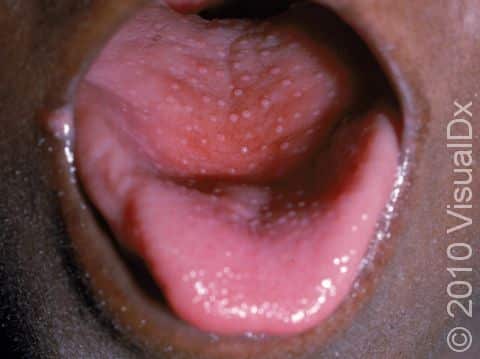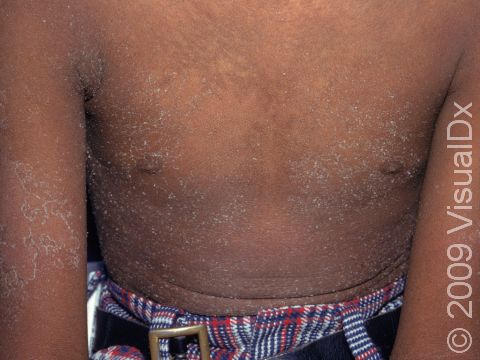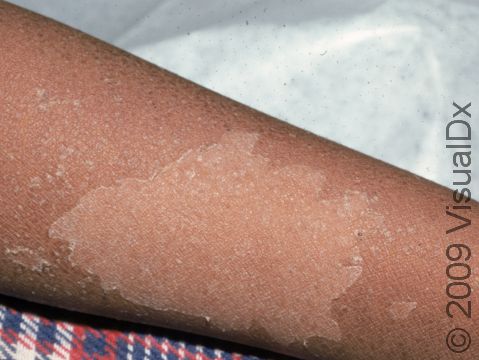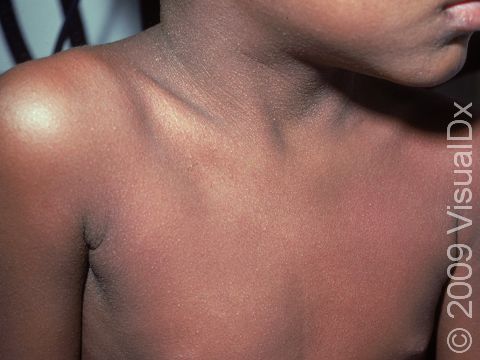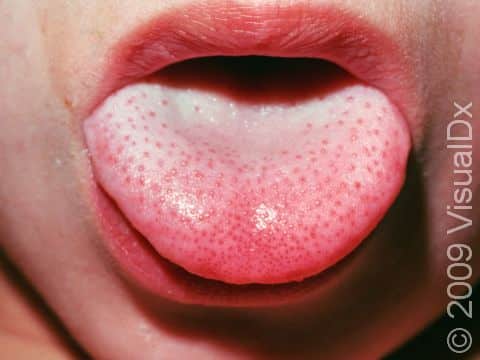Scarlet Fever
Scarlet fever is an infection with a type of bacteria called Streptococcus, which not only causes a throat infection (commonly known as “strep throat”) but also produces a toxin causing the distinctive rash of scarlet fever. Some people are more sensitive to the toxin than others, so not everyone in a family who is infected will have the rash, even if they have the throat infection.
Scarlet fever is spread by fluids from the airways (respiratory secretions), such as during coughing and sneezing. After being exposed, within 2-5 days, the rash may occur and may be accompanied by fever, lethargy, sore throat, and tender lymph nodes.
Complications with scarlet fever are rare, but deeper tissue infections, rheumatic fever, and kidney disease can occur.
Who's At Risk?
Scarlet fever is most common in children younger than 10 years, but it can affect adults as well. The peak ages for infection are 4-8 years. By age 10, most children have developed immunity to the toxin.
There is a higher incidence of scarlet fever infection in children in close quarters or crowded situations, such as day care.
Signs & Symptoms
Scarlet fever is accompanied by a sandpaper-like rash of 1-2 mm red papules (small, solid bumps), which merge together, starting on the neck, then moving to the trunk, and finally to the arms and legs. In darker skin colors, the redness may be harder to see, or it may appear more purple or brown. The rash of scarlet fever may appear more accentuated in skin folds and in the creases of the arms, legs, and at the underarms.
The rash of scarlet fever is sometimes itchy. Fever, chills, body aches, nausea, vomiting, and loss of appetite may occur.
When the throat is the main area of infection, the tonsils may become enlarged, red, and tender. Lymph nodes in the neck may become swollen. At first, the tongue has a white coating, giving a “white strawberry” tongue appearance, which then sheds to reveal a bright red strawberry tongue. The rash usually lasts for 4-5 days, and as it subsides, the skin on the neck and face starts to peel, and eventually the skin on the hands and feet starts to peel as well.
Self-Care Guidelines
It is difficult to avoid infection of others in the same household who are not immune. However, it may be helpful to:
- Keep personal items used by an ill household member away from other people or wash the items in hot, soapy water.
- Caregivers should wash their hands frequently.
The following can help keep the child comfortable while their symptoms improve:
- Acetaminophen (Children’s Tylenol) or ibuprofen (Children’s Motrin) can be given for fever relief.
- The child should be given soft foods and plenty of fluids.
- In the case of an itchy rash, applying calamine lotion may help.
Treatments
The medical professional will likely do a throat culture or a rapid strep test to confirm the diagnosis. If Streptococcus infection is suspected, an antibiotic will be prescribed, which should be taken as directed by the medical professional.
Visit Urgency
Call your child’s medical professional if you suspect they may have scarlet fever.
References
Bolognia J, Schaffer JV, Cerroni L. Dermatology. 4th ed. Philadelphia, PA: Elsevier; 2018.
James WD, Elston D, Treat JR, Rosenbach MA. Andrew’s Diseases of the Skin. 13th ed. Philadelphia, PA: Elsevier; 2019.
Kang S, Amagai M, Bruckner AL, et al. Fitzpatrick’s Dermatology. 9th ed. New York, NY: McGraw-Hill Education; 2019.
Paller A, Mancini A. Paller and Mancini: Hurwitz Clinical Pediatric Dermatology. 6th ed. St. Louis, MO: Elsevier; 2022.
Last modified on June 18th, 2024 at 2:15 pm

Not sure what to look for?
Try our new Rash and Skin Condition Finder
